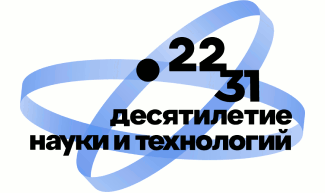Electrochemical generators with solid oxide fuel cells have been created at the Institute of HighTemperature Electrochemistry of the UB RAS as a part of the recently launched project of the Topaz integrated energy supply platform. The project is implemented by a consortium led by the general contractor of the Topaz Research Center and the curator of InEnergy Group of Companies with the participation of IHTE UB RAS, Institute of Catalysis and Institute of Solid State Chemistry and Mechanochemistry SB RAS, Neochem, and UNIKAT. The InEnergy Group of Companies is one of the few companies in the real sector of the economy that actually finances innovative scientific developments in the field of electrochemical energy sources.
The project is implemented with the support of the National Technology Initiative in the direction of the Intelligent Distributed Energy of the NTI EnergyNET roadmap. Its purpose is the creation of an integrated power supply platform based on electrochemical generators operating on affordable fuel, and four commercial products based on it. This will allow overcoming the barriers of the Novel and Mobile Energy Sources cross-cutting technology and significantly expand the use of highly efficient environmentally friendly and reliable energy sources for various market sectors.There are future plans for organizing industrial production of a model range of small and medium power electrochemical generators with solid oxide fuel cells, including small-sized portable power plant for charging mobile devices, mobile power plant for small robotics, and an automated low-maintenance power plant for distributed energy.
“Each member of the creative group sees how due to their efforts a scientific idea becomes a working model,” says Maxim Ananyev, Director of the IHTE UB RAS, DSc (Chemistry). – Our institute is positioned as the basic organization for creating a promising variety of solid oxide fuel cells (SOFC) – protonceramic fuel cells with oxide proton electrolyte, which have recently become an independent category and possess a number of advantages in comparison to the SOFC with anion-conducting electrolyte.
For the first time, the high proton conductivity in perovskite materials based on zirconates and alkaline earth metal cerates at elevated temperatures in the presence of water vapor was discovered by Japanese scientists led by H. Iwahara in the early 1980s. Later, it turned out that other perovskites as well as materials with the structure of apatite, scheelite, and fluorite, also possess proton conductivity. In Russia the studies related to proton conductivity in oxides began at Moscow State University. Moreover, in the Urals this issues were first studied by Valery Gorelov (PhD), the head of the Laboratory of Electrochemical Materials of IHTE. Nowadays, these studies are continuing in the department of the Solid State Electrochemistry, where an efficiently working team has been formed by the head of the laboratory of Solid Oxide Fuel Cells, the director of IHTE, Professor Maxim Ananyev, who has united both the older generation of scientists and young employees. Due to the continuity of scientific schools created in Soviet times in combination with financial instruments for the support of scientific research (the programs of the Ministry of Education and Science, grants from the Russian Science Foundation and the Russian Foundation for Basic Research), conditionsfor introducing fundamental results into practice have appeared. Colleagues from the InEnergy Group of Companies showed interest to the developments of the Ural electrochemists, and this grew into close cooperation between the participants of the consortium built on the network-centric principle, which includes RAS institutes, universities, as well as manufacturing enterprises.
– For two years now we have been actively working with the head of Inenergy Group of Companies Alexei Kashin and with Alexander Sivak, the general director of NITS TOPAZ , which is part of the InEnergy Group of Companies. With their support we were have managed to create a ground work for the implementation of a major project, – said Maxim Ananyev. – Our cooperation allows us to quickly turn a scientific idea into technology, and technology into a competitive market product. This principle is realized due to the effective work of the center of competence of the NTI at the New and Mobile Energy Sources at the Institute of Problems of Chemical Physics of the Russian Academy of Sciences, which is led by Professor Yuri Dobrovolsky.
– What are the advantages of protonceramic fuel cells in comparison with traditional SOFC?
– Proton conductivity is achieved due to oxygen disorder of oxides, i.e. the presence of structural or impurity oxygen vacancies in them, the interaction of which with hydrogen-containing components of the gas phase leads to the appearance of proton defects. A proton or hydrogen ion is a small and very mobile particle; it provides faster ion transport in the fuel cell compared to traditional oxygen-ion membranes with a rather heavy oxygen ion. The use of protons as charge carriers can significantly reduce the operating temperature of the SOFC. A sufficient level of oxygen-ion conductivity in them is achieved at 800–900 ° C, and in fuel cells based on oxide materials with proton conductivity the same level can be obtained at 500–600 ° C, which significantly increases their durability, reduces heat loss and simplifies the choice of structural materials, and also reduces the start-up time of electrochemical generators created on their basis. At the same time, the advantage of high-temperature ceramic SOFCs is preserved, since their operation does not require high-purity hydrogen.
Despite the electrochemical devices with traditional solid-oxide fuel cells, in a PCTE-based electrochemical generator, it is possible not to use a fuel processor, which serves for preliminary conversion of hydrocarbon fuel into synthesis gas before supplying SOFC, since using a proton-conducting membrane can directly convert hydrocarbon fuel. In other words, we take a can of propane-butane mixture and a can of carbon dioxide, bring gaseous fuel and air to the fuel cells and get electricity and heat.
Nowadays, the most popular proton-conducting electrolytes for electrochemical applications are oxides based on barium cerato-zirconates doped with rare-earth elements. We assume that at least no less promising material for SOFC is the lanthanum scandate. This material is stable, and it contains 10 times less alkaline earth metals, the presence of which is unfavorable for SOFC. We excluded barium – a very toxic element. We were able to choose such a composition of the lanthanum scandate, which is not inferior to analogues in terms of transport characteristics.
We create thin-film materials using modern techniques, including the hydrothermal method, followed by grinding to a submicron level, mechanically activating the resulting compound, and elaborating not only the chemical and phase composition, but also the microstructure of the particles and the particle size distribution of the dispersed phases. In order to obtain layers of proton-conducting oxide material for SOFC such methods as hot molding, cold casting, and dipcoating are also used.
As it was already mentioned, young researchers are actively involved in the implementation of the project. Part of the work is carried out in the laboratory of Cross-Cutting Technologies in Distributed Power Generation, organized at the IHTE at the end of last year according to the program of creating youth laboratories as a part of the Science national project.
– Our team has six promising young PhDs, says Dimitry Bronin, head of the laboratory, doctor of sciences in chemistry. – Graduate students are not far behind: recently, the employees of the youth laboratory Alena Lesnicheva, Anna Khodimchuk and Maxim Plekhanov were awarded scholarships from the Government of the Russian Federation. Maxim also became a scholarship holder of the President of Russia, while Alena and Anna received scholarships from the governor of the Sverdlovsk region.
The first graduate students of Maxim Ananyev Andrei Farlenkov and Evgeny Tropin have prepared their dissertations, the subject of which is closely related to the physical chemistry and electrochemistry of oxide materials used in the devices under development.
At the first stage of the innovation project it is planned to create a small portable generator with capacity up to 100 watts. It is also called the “outlet in the field.” This is simple and reliable device with relatively low operating temperatures, which means a longer fuel cell life.
Within the next two years the first prototypes of protonceramic fuel cells operating both on hydrogen and on hydrocarbon fuel will be manufactured. In 2021, it is planned to begin pilot production with the participation of partners from GK InEnergy.





